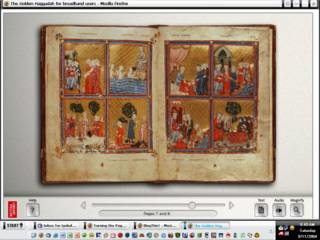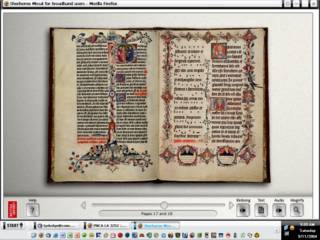First Things First
Welcome to our class blog!
I'm using this inaugural post to help us get off on the right foot. If you're someone who is already familiar with blogs, livejournals, IRC, IM-ing and whatever assorted geeky nomenclature I can muster up, you're probably not even reading this anymore. Shame on you for skipping ahead.
If you are brand-spanking new to online discussion forums, the odds are pretty good that you're absolutely terrified right now. The internet--and blogs as a whole--have both angelic and devilish qualities about them. We'll inevitably experience both here, but with a little bit of luck and some nifty prep work, you'll be up and posting in no time flat.
Three caveats before I turn you loose:
1) Do your best to keep the conversation civil and on-track. Hundreds of electronic communities die painful deaths every day because the participants don't respect one another or don't have anything relevant/intelligent to say. We might have our fair share of arguments here, but they shouldn't take the form of ad hominem attacks. Believe me: there are plenty of places online to vent any vile, biogted/racist/sexist/zealotist epithets you can think of; this isn't one of them.
2) Always remember that this is a public space; anyone with a computer and internet connection will be able to view our discussions. Please do not post any private information (home addresses and/or telephone numbers, social security numbers, grades, etc.) that you wouldn't want in the hands of a total stranger. You also might consider posting any email addresses (that is, if you find it necessary to post them at all...) in "no spam" format (i.e., "tdodge_AT_pnca_DOT_edu") to minimize the amount of porn and discount drug ads that will inevitably end up in your inbox.
3) To receive full credit for participating here, make sure your comments show your name somewhere. That will help me keep track of who's participating.
That's it. Let's get things off to a good start.
Ready?
Go!
I'm using this inaugural post to help us get off on the right foot. If you're someone who is already familiar with blogs, livejournals, IRC, IM-ing and whatever assorted geeky nomenclature I can muster up, you're probably not even reading this anymore. Shame on you for skipping ahead.
If you are brand-spanking new to online discussion forums, the odds are pretty good that you're absolutely terrified right now. The internet--and blogs as a whole--have both angelic and devilish qualities about them. We'll inevitably experience both here, but with a little bit of luck and some nifty prep work, you'll be up and posting in no time flat.
Three caveats before I turn you loose:
1) Do your best to keep the conversation civil and on-track. Hundreds of electronic communities die painful deaths every day because the participants don't respect one another or don't have anything relevant/intelligent to say. We might have our fair share of arguments here, but they shouldn't take the form of ad hominem attacks. Believe me: there are plenty of places online to vent any vile, biogted/racist/sexist/zealotist epithets you can think of; this isn't one of them.
2) Always remember that this is a public space; anyone with a computer and internet connection will be able to view our discussions. Please do not post any private information (home addresses and/or telephone numbers, social security numbers, grades, etc.) that you wouldn't want in the hands of a total stranger. You also might consider posting any email addresses (that is, if you find it necessary to post them at all...) in "no spam" format (i.e., "tdodge_AT_pnca_DOT_edu") to minimize the amount of porn and discount drug ads that will inevitably end up in your inbox.
3) To receive full credit for participating here, make sure your comments show your name somewhere. That will help me keep track of who's participating.
That's it. Let's get things off to a good start.
Ready?
Go!


